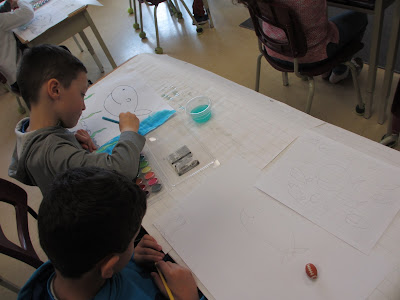From there, we're moving on to solving problems involving money. One great type of problem I like to teach kids to solve is called a "bake shop" problem (see photo below). Bake shop problems are great because they are multi-step and use a variety of the skills students have learned so far this year.
And then on Thursday, our lesson went in a different direction. We talked about the role that money plays in our lives. We talked about how some people have more of it and others have less. We explored reasons why this is the case and my students' answers were honest and compassionate. Many students mentioned what we would categorize as the mental health implications of struggling to make ends meet.
This conversation was the perfect lead in to our read-aloud. It's story called Tight Times, about a boy whose father loses his job.
The grade three Focus on Faith theme is "community and the common good" and this was an excellent opportunity to talk about why we do the things we do as a school community to help one another. I reminded students of our Fall food drive, the Tree of Light at Christmas and the upcoming Soap For Hope campaign. These are all ways that we as a school community help support vulnerable community members.
I tell my students that our most important job as citizens is to build each other up. We talk about how we should go out of our way to be mindful about how we speak and treat others, to the point where we ask ourselves, "Did they walk away from me feeling better than before our conversation started? Did I lift them up?"
This "money" lesson was a great way to connect our Focus on Faith theme with real-life examples of ways we can use our earnings to make a difference in the lives of others, and to appreciate the impact of how losing a source of income can have on community members.
So while it's not really part of the Math curriculum to talk about money in this manner and I've never tied these two themes together before, it certainly proved to be well worth it. I think all of my students walked away with a new appreciation for this vital concept.



























